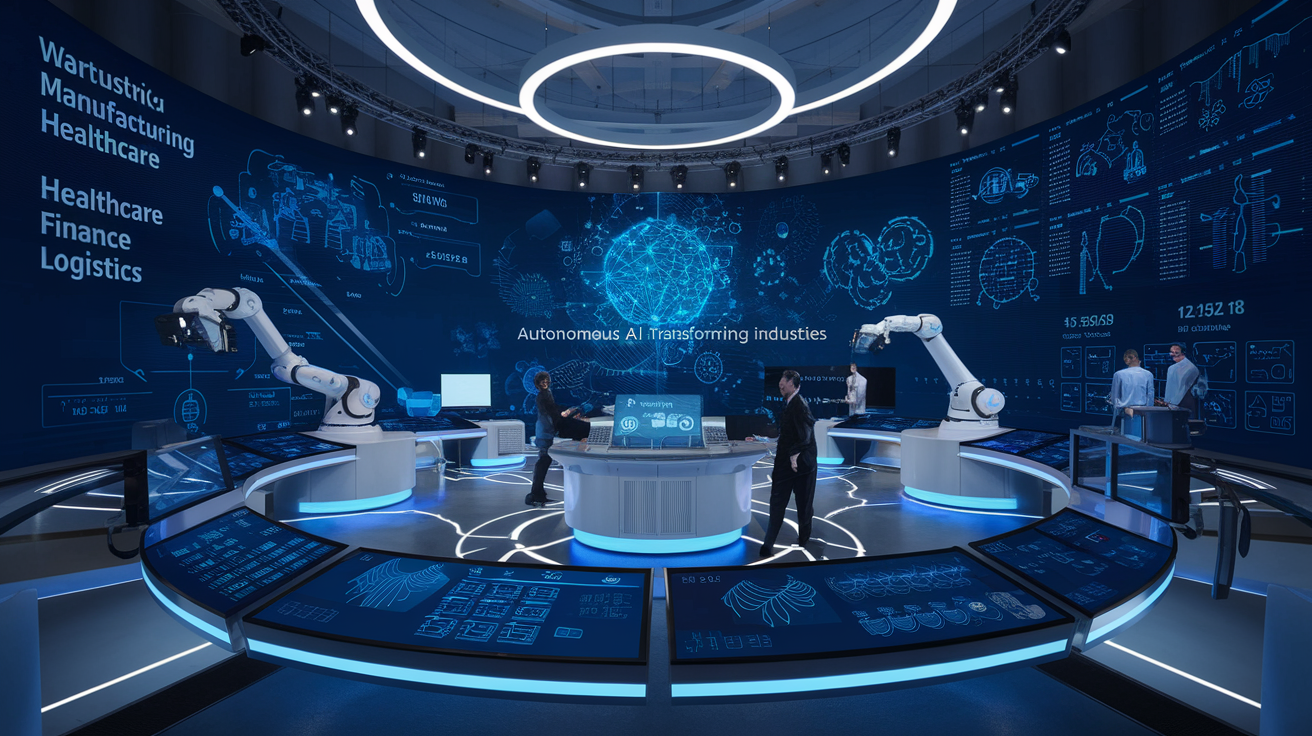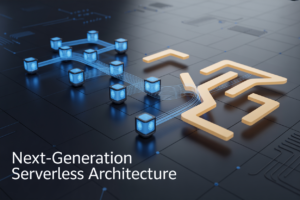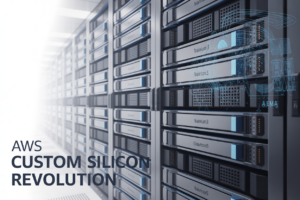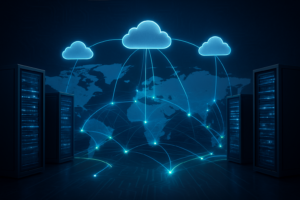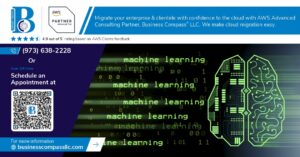Ever caught yourself thinking “If only my AI could just figure this out on its own”? You’re not alone. Business leaders across 87% of enterprises are desperately seeking solutions that don’t require constant human babysitting.
Let’s cut through the noise. This article will show you exactly how autonomous AI agents are revolutionizing automation across manufacturing, healthcare, and financial services—with real examples you can actually learn from.
The days of basic automation are behind us. Today’s autonomous AI agents aren’t just following predefined rules; they’re making decisions, adapting to new situations, and solving complex problems without human intervention.
But here’s what keeps executives up at night: if these AI agents are so smart, why do most implementations still fail? The answer might surprise you…
Understanding Autonomous AI Agents
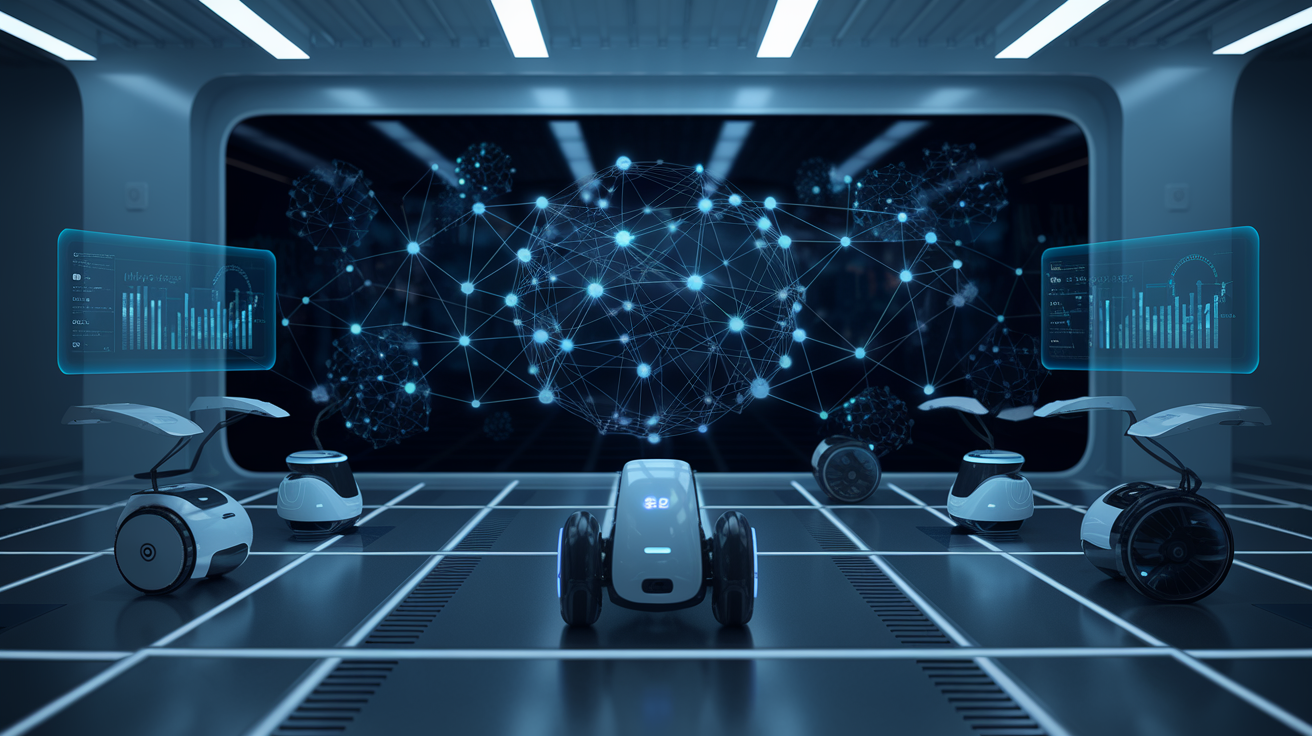
A. Defining AI Autonomy in Modern Systems
AI autonomy isn’t just a buzzword anymore. It’s the difference between systems that need constant babysitting and those that can actually think for themselves. Autonomous AI agents make decisions without human intervention, adapting to new situations using complex algorithms and learning mechanisms.
Think of it this way: traditional software follows a script, while autonomous AI writes its own story. These systems perceive their environment, process that information, and take action – all while improving over time.
The real magic happens when these agents start making choices humans didn’t explicitly program. That’s true autonomy.
B. Evolution from Rule-Based to Self-Learning Agents
We’ve come a long way from the rigid “if-this-then-that” systems of yesterday.
The evolution looked something like this:
| Era | Approach | Limitations |
|---|---|---|
| Early AI | Hard-coded rules | Couldn’t handle exceptions |
| ML Era | Statistical patterns | Limited by training data |
| Modern AI | Self-learning systems | Requiring less human oversight |
Today’s autonomous AI agents don’t just follow instructions – they create their own understanding through reinforcement learning, neural networks, and adaptive algorithms.
The game changed when we stopped telling AI exactly what to do and started letting it figure things out. Now these systems can tackle problems they’ve never seen before.
C. Key Technologies Enabling Autonomous Decision Making
The secret sauce behind autonomous AI agents? A powerful tech stack that’s finally mature enough to support genuine independence:
- Deep learning architectures that mimic human neural networks
- Reinforcement learning systems that improve through trial and error
- Natural language processing that understands context, not just keywords
- Computer vision systems that interpret the world like humans do
- Edge computing that allows for real-time decisions without cloud dependencies
These technologies work together, creating systems that can reason about their environment in increasingly sophisticated ways.
D. How Today’s AI Agents Differ from Traditional Automation
Traditional automation is like a train on tracks – efficient but inflexible. Autonomous AI agents are more like off-road vehicles exploring new territory.
The difference isn’t subtle. Traditional automation executes predefined workflows without deviation. It’s predictable but breaks when facing unexpected scenarios.
Autonomous agents, however, can:
- Adapt to changing conditions without reprogramming
- Learn from mistakes and improve performance
- Make judgment calls when data is incomplete
- Collaborate with humans and other AI systems
- Explain their reasoning (at least the better ones can)
This jump from rigid automation to adaptive intelligence is transforming everything from manufacturing floors to customer service centers. We’re not just automating tasks anymore – we’re creating digital colleagues.
Current Applications Transforming Industries

Current Applications Transforming Industries
A. Manufacturing: Smart Factories and Predictive Maintenance
Autonomous AI agents are completely reshaping manufacturing floors worldwide. These smart systems don’t just follow pre-programmed instructions – they learn, adapt, and make decisions on their own.
Picture this: sensors throughout a factory feeding real-time data to AI agents that predict when machines will break down before it happens. That’s not sci-fi – it’s happening right now. Companies like Siemens and GE have cut downtime by up to 30% with these predictive maintenance systems.
The really game-changing part? These autonomous AI agents don’t need human babysitting. They monitor production lines 24/7, automatically adjust parameters when materials change, and even optimize energy usage based on production demands.
B. Healthcare: Diagnosis Assistance and Treatment Planning
The healthcare revolution is well underway with autonomous AI agents analyzing medical images faster and often more accurately than human specialists.
Take RadNet’s mammography AI, which can spot subtle signs of breast cancer that might be missed in initial screenings. Or consider how Mayo Clinic uses autonomous agents to analyze thousands of variables in patient data to recommend personalized treatment plans.
The impact? Faster diagnoses, reduced human error, and treatment recommendations backed by analysis of millions of similar cases.
C. Financial Services: Algorithmic Trading and Fraud Detection
Wall Street was an early adopter of autonomous AI agent technology, and for good reason. These systems process market data in milliseconds, executing trades faster than any human trader could even comprehend the information.
But algorithmic trading is just the beginning. Fraud detection AI agents now monitor millions of transactions in real-time, learning normal patterns and flagging suspicious activity instantly. JPMorgan Chase’s COIN system reviews complex contracts in seconds that would take lawyers 360,000 hours annually.
The really impressive part is how these systems continuously evolve. Today’s autonomous financial AI doesn’t just follow rules – it discovers new fraud patterns and trading strategies humans might never identify.
D. Logistics: Supply Chain Optimization and Route Planning
The old days of static delivery routes and manual inventory management are disappearing fast. Autonomous AI agents now orchestrate global supply chains with stunning efficiency.
Amazon’s fulfillment centers showcase this transformation perfectly. Their AI systems predict what you’ll order before you order it, positioning inventory strategically across their network. Meanwhile, companies like DHL use autonomous agents to continuously recalculate optimal delivery routes based on traffic, weather, and package priorities.
The results speak for themselves: reduced fuel consumption, faster deliveries, and supply chains that can adapt to disruptions in real-time.
E. Customer Service: Intelligent Assistants and Personalization
Remember those frustrating early chatbots? Today’s autonomous customer service agents are nothing like them. Modern AI assistants understand context, sentiment, and can handle surprisingly complex customer issues.
What makes them truly autonomous is their ability to learn from every interaction. They analyze customer tone, adapt to different communication styles, and even recognize when to escalate to human agents.
Companies like Stitch Fix take personalization even further, with AI agents that learn your style preferences better than you know them yourself. Their recommendation engines don’t just match past purchases – they understand subtle style patterns and anticipate future preferences.
Economic Impact of Autonomous AI

A. Cost Reduction Through Continuous Optimization
Autonomous AI agents aren’t just fancy tech—they’re money-saving machines. These systems continuously learn and optimize processes without human intervention, slashing operational costs dramatically.
Think about it: A factory with autonomous AI can identify inefficiencies in real-time and make micro-adjustments to energy usage, resource allocation, and maintenance schedules. We’re talking about 15-30% cost reductions in most cases. That’s not small change.
Unlike traditional automation that follows static rules, autonomous agent implementation means your systems get smarter every day. They don’t just execute—they improve.
B. Productivity Gains Across Sectors
The productivity boost from intelligent automation systems is mind-blowing. In manufacturing, autonomous AI has increased output by up to 25% while reducing errors by 90%. In healthcare, these systems process patient data and administrative tasks in seconds instead of hours.
What makes this different? Traditional automation was about speed. Autonomous AI is about intelligence—making decisions humans would make, just faster and without coffee breaks.
C. New Business Models Enabled by AI Autonomy
Autonomous AI isn’t just improving existing models—it’s creating entirely new ones. Companies now offer “Intelligence-as-a-Service,” where autonomous agents handle everything from customer service to complex analytics.
The subscription economy is exploding with AI-powered offerings that weren’t possible five years ago. Predictive maintenance services, autonomous supply chain optimization, and real-time market adaptation are creating revenue streams that simply didn’t exist before.
D. Job Market Transformation and Skill Requirements
The job landscape is shifting dramatically. Routine jobs are vanishing, but new roles are emerging just as quickly.
Skills in high demand now:
- AI system oversight
- Autonomous agent ethics and governance
- Human-AI collaboration strategies
- Complex problem framing (telling AI what to solve)
The future belongs to people who can partner with AI rather than compete against it. Those who understand both human needs and AI capabilities will thrive in this transformed economy.
Implementation Challenges and Solutions

A. Integration with Legacy Systems
The brutal truth? Most companies trying to implement autonomous AI agents are fighting with ancient tech systems that refuse to cooperate. These legacy systems weren’t built with AI in mind, and they’re about as flexible as concrete.
Companies often face a choice: rip everything out and start fresh (ouch, expensive) or find ways to make old and new play nice together. API development has become the superhero in this story, creating bridges between autonomous AI agents and those crusty old systems.
Smart businesses are taking the middle road with a phased implementation approach:
- Start with non-critical processes as testing grounds
- Build custom middleware that speaks both languages
- Gradually replace legacy components as ROI justifies it
One manufacturing giant saved millions by building a translation layer between their 1990s inventory system and new autonomous AI agents rather than replacing everything at once.
B. Data Security and Privacy Concerns
Nothing kills an autonomous AI implementation faster than a data breach. With autonomous AI agents constantly gathering, analyzing, and acting on data, the security stakes are through the roof.
The biggest security headaches include:
- Expanded attack surfaces as AI interacts with multiple systems
- Data poisoning attempts targeting the AI’s learning mechanisms
- Privacy compliance nightmares across different jurisdictions
Smart companies aren’t just throwing encryption at the problem. They’re building security into the AI architecture from day one with:
- Granular permission systems controlling what agents can access
- Continuous monitoring for unusual agent behaviors
- Regular red-team exercises to identify vulnerabilities
Healthcare organizations implementing autonomous agents for patient scheduling are using federated learning approaches to keep sensitive data local while still training their models effectively.
C. Regulatory Compliance and Ethical Considerations
The regulatory landscape for autonomous AI agents is a mess. It’s changing constantly, varies wildly by industry and region, and often lags behind what the technology can actually do.
Financial services firms implementing autonomous trading agents face a particularly steep climb with regulations that never contemplated AI making decisions. Some institutions have created dedicated AI governance teams that include legal experts, ethicists, and technical specialists.
Beyond just following rules, there’s the thorny question of AI ethics. Companies need to address:
- Transparency in how agents make decisions
- Accountability structures when things go sideways
- Fairness assessment to prevent algorithmic bias
Organizations that bake ethics into their autonomous agent strategy from the beginning avoid costly retrofits later. They’re also building customer trust that pays dividends in adoption rates.
D. Building Human-AI Collaboration Frameworks
The whole “robots taking our jobs” fear? It misses the real opportunity: humans and AI agents working together in ways that amplify each other’s strengths.
The most successful implementations create clear swim lanes:
| Human Strengths | AI Agent Strengths |
|---|---|
| Creative problem-solving | Processing massive datasets |
| Emotional intelligence | Consistent execution |
| Ethical judgment | 24/7 operation |
| Contextual understanding | Speed and accuracy |
Companies need to invest as much in training humans to work with AI as they do in training the AI itself. This means developing:
- Clear handoff protocols between humans and AI agents
- Intuitive interfaces that promote collaboration
- Training programs that build AI literacy
A retail giant recently discovered their customer service quality jumped 34% when they redesigned their autonomous agent interface based on feedback from human service reps.
E. Cost-Benefit Analysis for Different Industry Sizes
The hard numbers on autonomous AI implementation look different depending on your company size.
Enterprise corporations can spread initial development costs across massive operations, seeing ROI in as little as 12-18 months. A major logistics company automated fleet optimization with autonomous agents and recouped their $2.1M investment within a year through fuel savings alone.
Mid-sized businesses face a steeper initial climb but can leverage increasingly sophisticated off-the-shelf solutions. Their sweet spot? Targeted implementations in high-value areas like inventory management or customer engagement.
Small businesses aren’t out of the game. They’re finding success with:
- Industry-specific AI agent platforms requiring minimal customization
- Subscription-based AI agent services with pay-as-you-grow models
- Consortium approaches where several companies share implementation costs
The democratization of autonomous AI technology is happening faster than many predicted, with implementation costs dropping approximately 27% year-over-year as the technology matures.
Future Directions of Autonomous AI
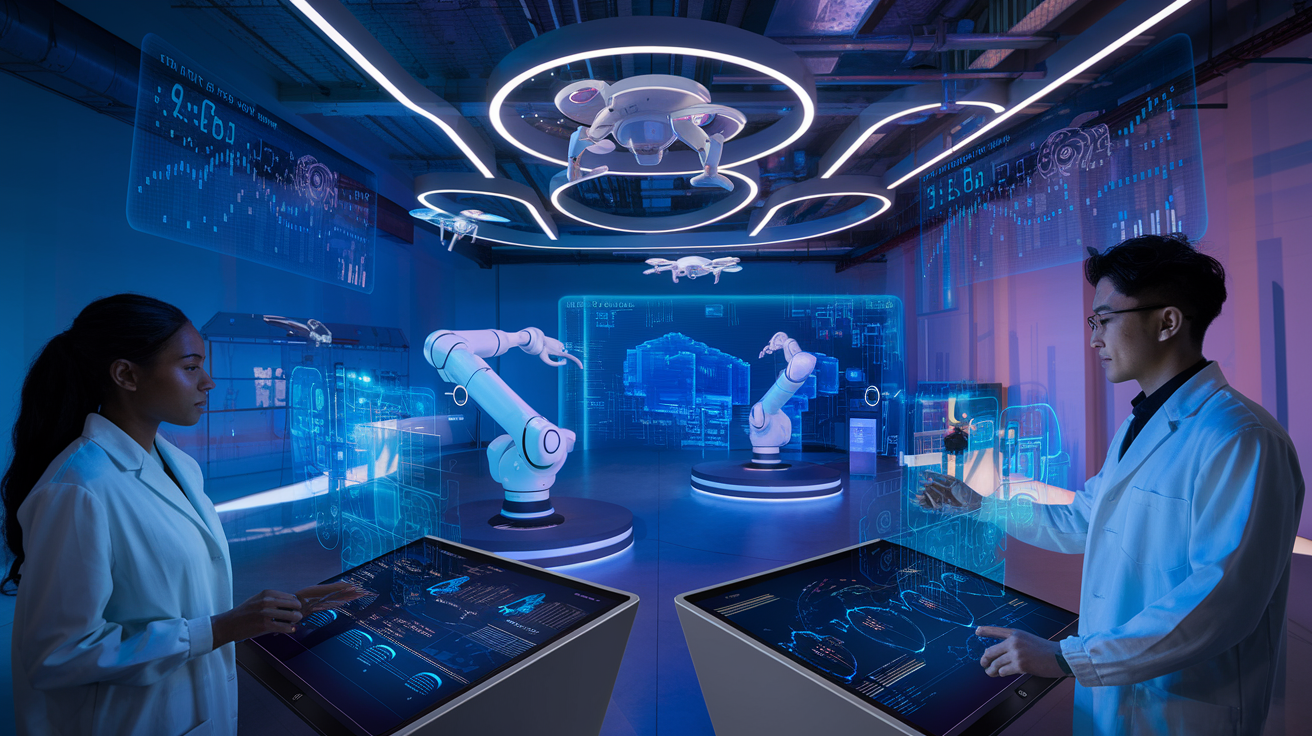
A. Multi-Agent Systems Working in Coordination
Gone are the days of single-task AI. The future belongs to swarms of autonomous AI agents working together like a well-oiled machine. Think of it as a digital ecosystem where specialized agents handle different parts of complex problems simultaneously.
We’re already seeing early versions in supply chains where one AI handles inventory while another manages logistics and a third predicts market demands. When they talk to each other? Magic happens.
These collaborative systems aren’t just faster – they’re smarter. Each agent brings its specialty to the table, creating solutions no single system could develop alone.
B. Self-Improving AI Networks
The real game-changer? AI systems that get better without human intervention.
These networks don’t just learn from data – they actively experiment, evaluate their performance, and rewrite their own algorithms. It’s like having an employee who not only does their job but figures out better ways to do it overnight.
The economic impact here is massive. Companies implementing self-improving autonomous AI report 30-40% efficiency gains within months, not years.
C. Industry-Specific Innovation Frontiers
Every industry has its AI revolution brewing:
- Healthcare: Autonomous diagnostic systems that coordinate with treatment-planning agents
- Manufacturing: Self-optimizing production lines that adjust in real-time to changing conditions
- Finance: Risk assessment networks that communicate with market prediction agents
The revolution isn’t one-size-fits-all. Each sector is developing specialized autonomous agents that understand the unique challenges they face.
D. The Road to General Autonomous Intelligence
We’re not talking science fiction. The pathway to more generalized autonomous intelligence is being paved right now through incremental advances in:
- Transfer learning between agent systems
- Context-awareness across multiple domains
- Ethical decision frameworks
The challenge isn’t just technical – it’s about creating AI that understands the bigger picture while still delivering specialized expertise. That’s where the true transformation of industries will happen.

The rise of autonomous AI agents represents a pivotal shift in how businesses operate across sectors. From manufacturing to healthcare, these intelligent systems are streamlining processes, reducing human error, and enabling innovations previously thought impossible. As we’ve explored, these technologies are not just automating tasks but fundamentally transforming entire industries through their ability to learn, adapt, and make decisions without constant human oversight.
As companies navigate implementation challenges like data security and workforce transitions, the potential economic benefits remain compelling. Organizations that strategically integrate autonomous AI stand to gain significant competitive advantages in the coming years. Whether you’re just beginning your AI journey or looking to expand existing capabilities, now is the time to evaluate how autonomous agents can enhance your operations and position your business for future success in an increasingly AI-driven world.










